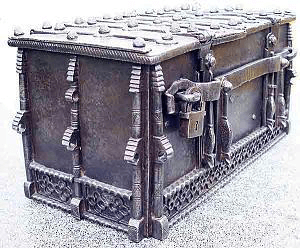Create a Backup Set of Records Electronically Taxpayers should keep a set of backup records in a safe place. The backup should be stored away from the original set. Keeping a backup set of records –– including,

for example, bank statements, tax returns, insurance policies, etc. –– is easier now that many financial institutions provide statements and documents electronically, and much financial information is available on the Internet. Even if the original records are provided only on paper, they can be scanned into an electronic format. With documents in electronic form, taxpayers can download them to a backup storage device, like an external hard drive, or burn them to a CD or DVD.
Document Valuables Another step a taxpayer can take to prepare for disaster is to photograph or videotape the contents of his or her home, especially items of higher value. The IRS has a disaster loss workbook, Publication 584, which can help taxpayers compile a room-by-room list of belongings. A photographic record can help an individual prove the market value of items for insurance and casualty loss claims. Photos should be stored with a friend or family member who lives outside the area.
Update Emergency Plans Emergency plans should be reviewed annually. Personal and business situations change over time as do preparedness needs. When employers hire new employees or when a company or organization changes functions, plans should be updated accordingly and employees should be informed of the changes.
Check on Fiduciary Bonds Employers who use payroll service providers should ask the provider if it has a fiduciary bond in place. The bond could protect the employer in the event of default by the payroll service provider.
IRS Ready to Help If disaster strikes, an affected taxpayer can call 1-866-562-5227 to speak with an IRS specialist trained to handle disaster-related issues. Back copies of previously-filed tax returns and all attachments, including Forms W-2, can be requested by filing Form 4506, Request for Copy of Tax Return.
